Beach camping is completely different from the woods and other parts of nature. If you’re thinking about whether this is the right move for you, there are some things you should know. You need to know what to bring along with you, where to set up your shelter, and all the other fine details that can make for a smooth camping experience.
Beginners need to research whether they can camp at their local beaches and whether water or firewood is available. Bring beach-specific gear like a dustpan and broom, sand stakes, or bags to secure the tent. Pack more water and ice than you need, sunscreen with high SPF, and aloe vera.
You can have a lot of fun beach camping, and these tips will make your next trip more likely to be a success.
Best Beach Camping Tips for Beginners
Are you ready to try to brave the beach for your next camping trip? This can be a beautiful way to spend a weekend in any weather, as long as your local beach allows it.
However, there’s a much different way to prepare for a beach camping trip than one to the mountains or the woods. You’ll need special gear and a unique packing list to successfully plan a beach camping trip.
If you’re ready to learn the top tips for beginners, here is what you need to know.
1. Research Beaches in Your Local Area
The first thing you need to do to go beach camping is research. It might not be the most exciting part of braving the wilderness, but it’s a necessary step.
Not all beaches allow for camping. Those that do may only permit camping during certain seasons. For example, some beaches are closed to camping during hurricanes or off-season.
To find out whether beach camping is permissible, you may have to reach out to the county or state park that services the local area.
While you’re busy researching the location of your next beach camping trip, you should look into where the closest freshwater source is.
If you choose to go camping where there’s no easily accessible source of drinking water, you’ll be saddled down with gallons of your water as you trek through those sandhills.
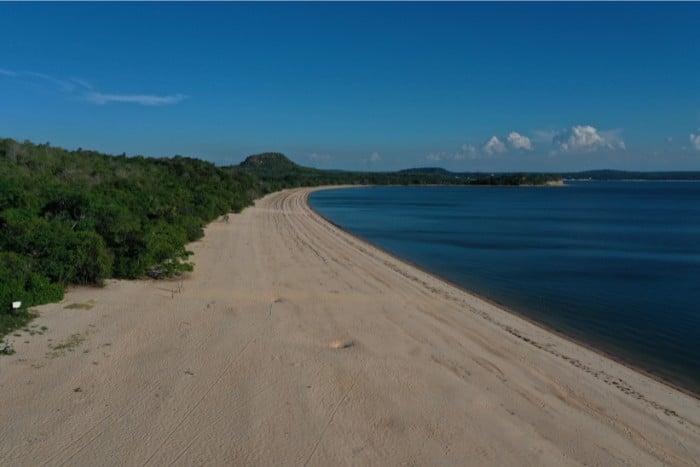
2. Consider Tarp Camping
If you intend to go beach camping during peak seasons and ideal weather, you might be able to ditch the heavy-duty tent.
This saves you time on setup, makes your pack lighter to carry to your ultimate destination, and allows you to enjoy the breeze.
You can try stringing up a tarp with just one or two poles or purchase a floorless tent.
Remember that you may want to check the weather forecast before using this type of shelter. You’ll get plenty wet if it starts to rain and you don’t have a proper tent.
3. Prepare for Bugs
On the other hand, you might want a tent if the insects at your local beach are particularly bothersome.
You may want to select a tent that has good ventilation so you can still enjoy the wonderful sea breeze floating in off the ocean.
Open the vents on your tent, as long as your mesh is small enough that it won’t allow the little sand gnats to get inside.
Bug spray can also be a helpful addition to your packing list. You might still find ticks and other pesky insects, especially if you’re near the dunes (never on them!).
4. Know What to Expect from the Tide
Many beach campers find themselves surprised when they get wet while lying in their tent in the middle of the night.
They accidentally park themselves too close to the shore and place their gear in the middle of where the high tide will hit. This frequently happens when campers get their site set up during low tide.
Generally, you should look for the line where seaweed and driftwood are washed up on the shore. It’s likely farther back from the shoreline than you think.
Remember that the tide might come in even farther during certain moon phases or when the weather is less ideal.
Your best bet is to go as far back as possible while enjoying the beach. Just remember to stay off the dunes!
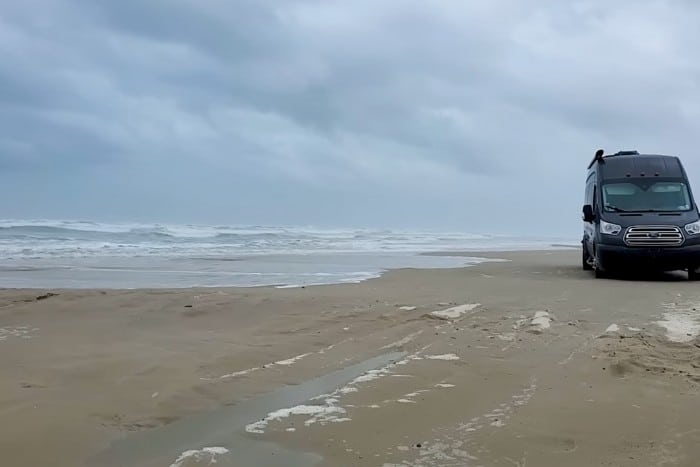
5. Prepare to Stake Your Tent
Bringing a traditional tent is still a great option for beach camping, but you’ll need some unique supplies to get it set up. Some campers prefer to use sand stakes to better anchor their tent.
These stakes are usually longer than traditional ones and take a screw-shaped or U-shaped design.
Get used to positioning them at the proper angle to keep your tent steady in the wind. It might take you a few tries to get the hang of it, but you’ll be a pro in no time.
Another option is to anchor your tent with tent weights or sandbags. Sandbags are easy to make – just bring some empty bags and shovel them full of sand when you get to your destination.
This makes it effective to keep your gear lightweight if you have a long walk from the car to your site.
6. Keep Your Tent Clean
Campers who stick with a traditional tent will want to do everything they can to keep the sticky sand out of their tent.
There’s no avoiding it with tentless camping, but you might want a reprieve from the gritty sand if you have a real tent. There are a few ways you can cope with the endless grains of sand.
First, you can use the vestibule of your tent as a place to take off shoes and rinse off. Keep a bucket of water handy, so you can rinse your feet before entering the tent’s interior.
Bring a small brush to knock the sand off if you can’t use water. If your tent has no vestibule, you can make one by spreading a tarp next to the entrance of your tent.
This will also be super easy to shake out when you’re ready to pack up, eliminating the need to carry pounds of sand with you on the way home.
7. Bring a Dustpan
Since you’re already bringing along a small brush to keep sand out of your tent, bring along a dustpan.
When sand inevitably makes its way into your tent, you can quickly and easily brush it up into the dustpan and dump it outside.
This will allow you to sleep comfortably without being covered in sand when you wake up.
If you don’t already have one of these around your house, head to the dollar store and pick one up. You’ll be immensely grateful that you did!
8. Skip the Sleeping Pad in Summer
Camping in the woods usually means you’ll need a sleeping pad to be comfortable. The dirt, tree roots, and rocks can make for a long night of tossing and turn without protection and padding.
The good news for beach campers is that sand is soft and relatively easy to sleep on. You won’t have to worry about investing in a quality sleep pad for beach camping in the summer.
Of course, it’s worth noting that the sand can get quite cold in the winter. You might lose a great deal of body heat, transferring from you to the sand beneath you in the winter.
While you may not need a sleeping pad for comfort, it’s best to pack one to keep you insulated and warm.
9. Bring Your Own Firewood
Some beaches may have an abundance of driftwood that you can use to start a beautiful bonfire when the sun sets. However, you’ll have to worry whether it’s dry enough to catch a flame.
If you aren’t positive that there’s vegetation or fuel you can use to start a fire, you might want to bring your firewood.
You should consider this when planning and researching your beach camping trip. If you can visit the beach ahead of time, take stock of what you might need to bring along with you.
Firewood is heavy; you only want to pack and carry it if you have to.
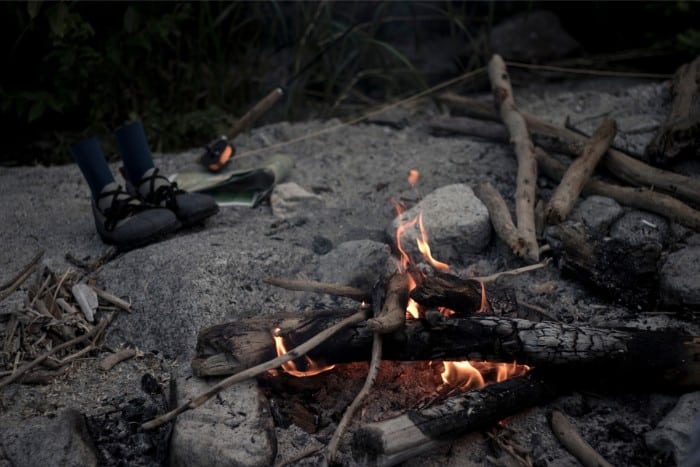
10. Set Your Fire Up for Success
Have you ever tried to start a fire on the beach? You might be surprised at how different it is from traditional camping – and how much more difficult it can be.
Most campers love the beach because it has excellent breezes that keep them cool. However, this is less than ideal for starting a fire.
Instead, you’ll need to shelter your fire from the wind so that you can get a flame to catch your firewood or driftwood pile.
The best way to do this is simply to dig a hole in the sand and allow the beach to insulate your fire from the wind.
Bring a shovel or use your hands to get about two feet deep in the sand before you set up the kindling.
11. Get a Break from the Sun
While most people want to go beach camping to spend all day on the sand and in the surf, it’s also a good way to get a sunburn.
From time to time, you’ll need to take a break from the sun’s harsh rays. To this end, you might want to invest in a small shelter that can provide coverage.
Alternatively, you could pack a beach umbrella if you’ll be camping solo. Always take care of your skin when you’re beach camping.
Even if the weather isn’t hot, you’ll still get sunburnt if you don’t lather on the sunscreen with SPF or wear clothes with built-in SPF.
Add a pair of sunglasses to your packing list and a hat with a wide brim to shield your face from the glare. Don’t forget to bring something to take the sting of an unintentional sunburn, too, like aloe vera gel.
12. Bring More Water than You Think You Need
Imagine spending a day at the beach on the hot sand. You’ve been swimming for hours, and the sun has been beating down on you the whole time.
Chances are that you’ve worked up quite a thirst, likely more than you thought you would.
Think about how much water you drink on a given day at home, and make sure you pack plenty more than that for a beach camping trip unless you have a source of drinking water there.
Remember that water will be your best friend when you’re beach camping. It’s not only the best drink to quench your thirst, but you’ll need it to rinse off your gear and cook.
Always err on caution and bring more than you think you’ll need.
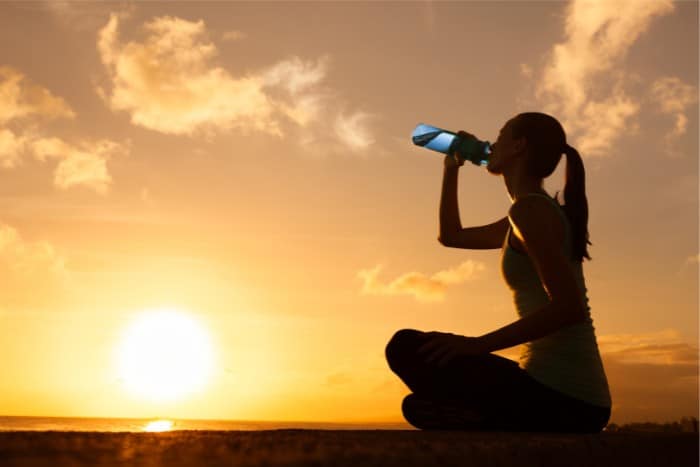
13. Double Your Ice
In addition to packing plenty of water, you’ll want tons of ice. It doesn’t feel as refreshing to have room-temperature water when extremely thirsty.
The best thing to do is to bring two coolers. One can hold all your food and water, while the other holds just ice. Because you’ll be opening this second cooler less frequently, it’ll keep cooler for longer.
Not only will you have tons of ice for your water, but you’ll also be able to keep perishable food cold for longer.
14. Prepare Activities
At first, you might love lounging on the beach all day. This is usually fun for the first day or maybe just the first couple of hours. Most people get bored staring out over the waves at a certain point.
Be sure to bring games and activities to do. You might want to pack your art supplies, a few backyard games, a beach volleyball, or toys for the kids to make a sandcastle.
15. Pack a Few Different Towels
Before sitting in your folding chair, you climb out of the ocean and want to dry off. Is there anything worse than rubbing rough sand all over your body?
After you use a towel one or two times, chances are that it’s covered in sand that can be difficult to shake out. You’ll be much more comfortable if you have multiple beach towels.
Some can be used for lounging, drying off, showering, and some hand towels for cleaning.
If it sounds like a lot to pack, it can be, but you’ll be immensely grateful that you did once you get tired of wiping sand all over your body.
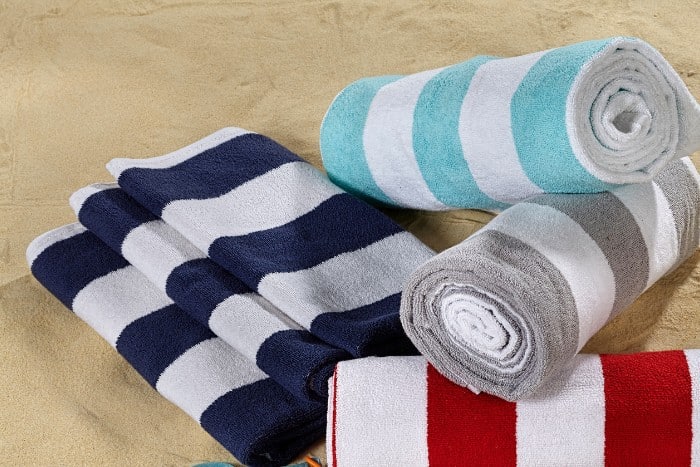
Final Thoughts
If you were thinking about taking a beach camping trip, you’re in for a lot of fun! Camping on the beach is a great experience – if you come prepared with some of the items on this list.
Knowing how to manage sand and sun is a challenge. With some beginner-friendly camping tips, you’ll look like an old pro next time you pack up your tent and hit the beach.
